Roller skates include quad skates with four wheels, inline skates with excellent gliding properties, and removable skates that can be worn over shoes. Beginners should choose the one that fits their feet and is safe. So, in this issue, we will introduce some points to keep in mind when practicing.
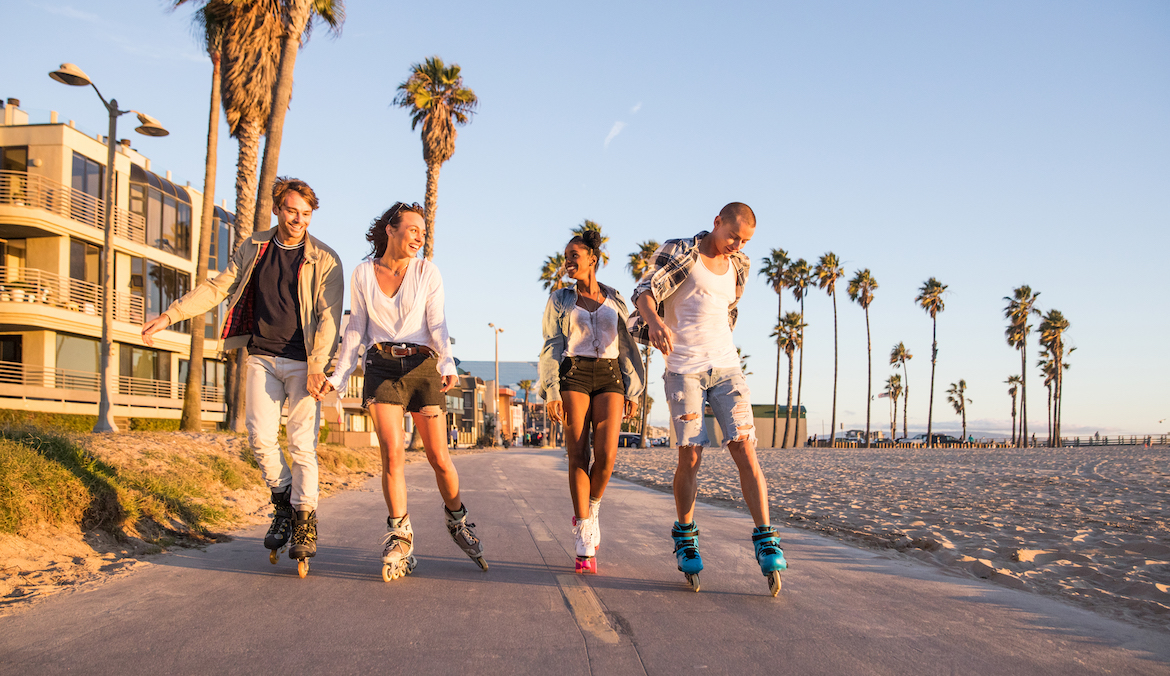
How to Practice and Tips to Keep in Mind
Quad skates and inline skates have different tips and practice methods. For beginners and children who are new to roller skating, the three basic steps are “stand”, “walk”, and “slide”. Let’s start with quad skates, which have four wheels for stability.
Practice standing, walking, and sliding little by little
Beginners cannot even stand up on roller skates. Practice standing while holding on to a handrail or having someone support you in pairs. Once you get used to standing on your own, practice moving forward. The key is to keep your weight “forward” as much as possible while moving forward, because if your center of gravity leans backward, you will fall on your buttocks.
For children, it is best if an adult stands in front of the child and slowly pulls the child’s hand as he or she moves. Once the child gets used to walking, it is time to practice sliding. If you try to slide straight ahead, the rollers will spin. Start with a “clacking” sound as you walk.
If you put your hands on your knees, you can roll forward with a protector even if you lose your balance. Once you get used to it, the key is to open your toes outward in a “C” and start sliding as if you are “kicking out” at an angle.
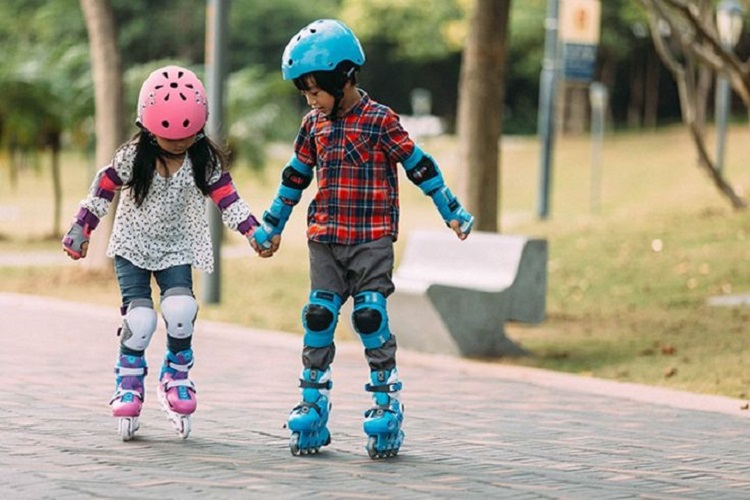 Mastering how to stop
Mastering how to stop
At the same time as practicing how to skate, you should master how to stop smoothly. There are several ways to stop on roller skates. The “C” is the way to stop slowly by turning your legs in the direction of the “C” and putting pressure on the inside of your knees. When teaching children, it is sometimes difficult to convey the “Ha” gesture in words.
It is best to use gestures or have an adult actually show them how to move their legs.
The “T-Stop”, as it is commonly called, is a way to stop when the speed is a little too fast. Point one leg straight ahead in front of the other in a front weighted position with knees bent. Place your other toe foot sideways so that it is against your heel. Decelerate as you extend upward and stop, using the ground contact as a brake. Beginners should start by mastering the “C” stop.
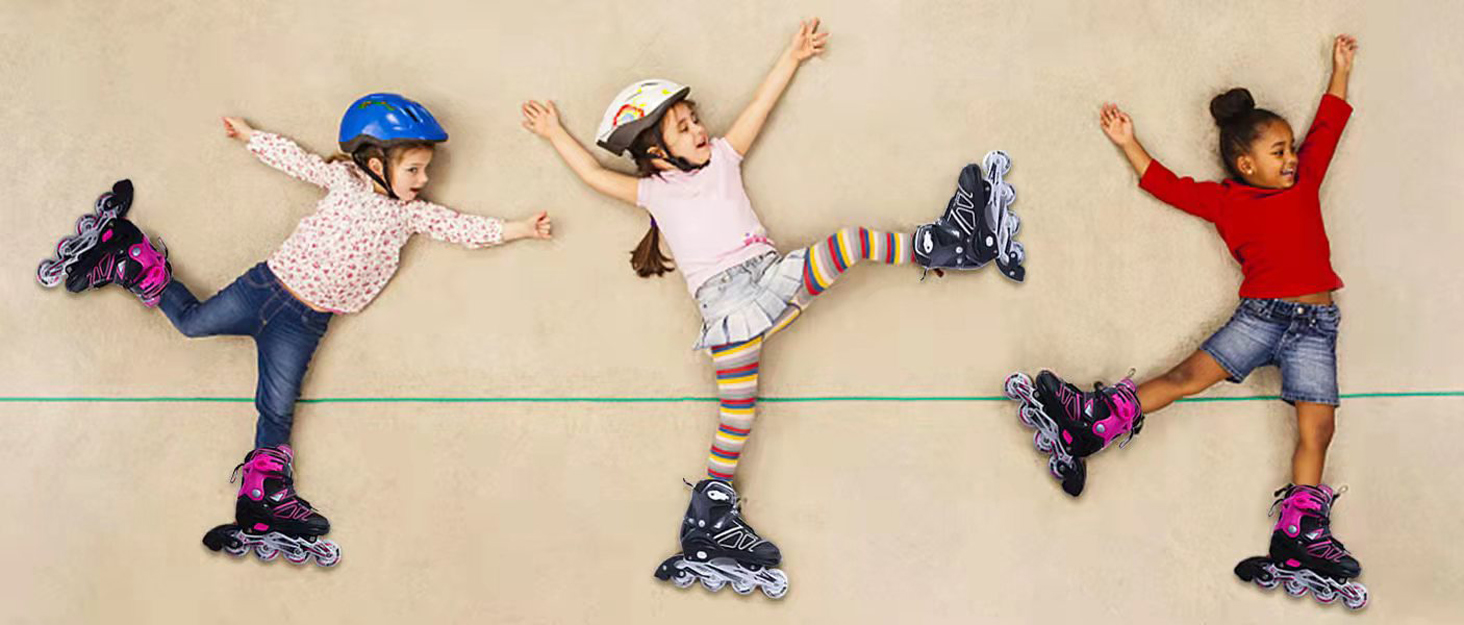 Check Here Before Skating
Check Here Before Skating
When children and beginners practice roller skating, they should take safety into consideration. A wrong choice of location or inadequate protective gear can lead to an unexpected accident.
Research the practice location in advance
The best place to practice roller skating is in a “wide, flat area with few pedestrians”. Asphalt squares, bike paths in parks, dedicated parks, and skating rinks are the best places to practice roller skating. When using a park or dedicated park, it is recommended to choose a time when there are few people around.
Some parks prohibit roller skating, so check the Internet beforehand. Places with slopes are not suitable for beginners, as just standing on them will cause you to start sliding forward. Avoid places with many obstacles, brick or gravel paths, and busy roads. If you allow children to practice, adults should keep a close eye on them to ensure that they have a safe and enjoyable experience.
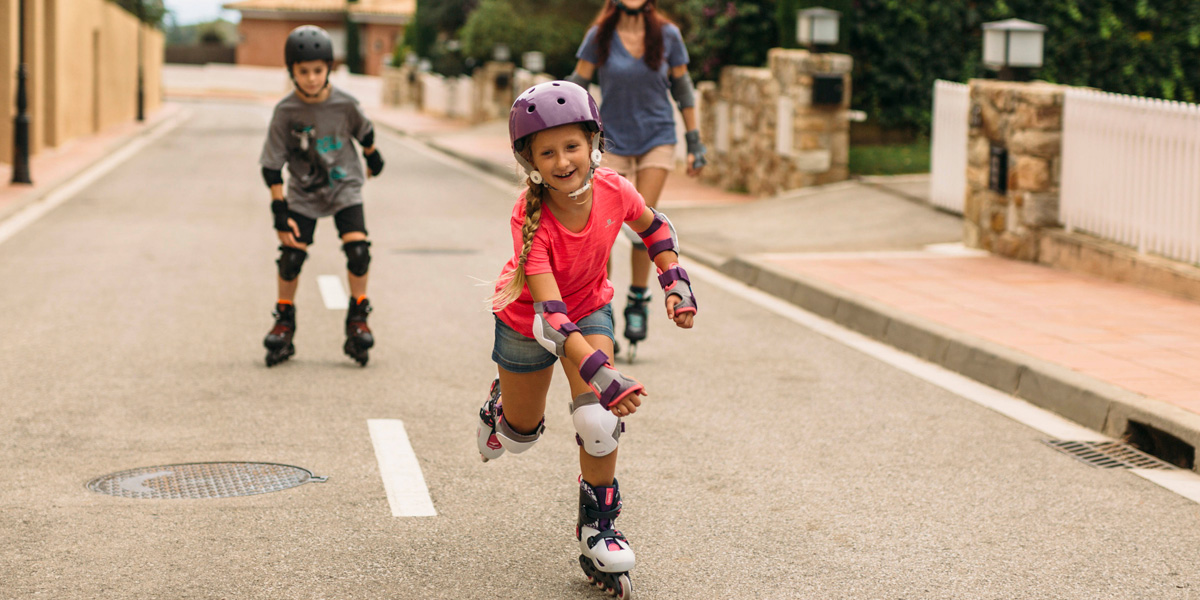 Think carefully about safety
Think carefully about safety
In the beginning, you may not be able to control your body as well as you would like, and you are likely to fall over. Helmets and protectors are must-haves for beginners to prevent injury. Some skating rinks rent out sets of protective gear, so make sure you have all the equipment you need before practicing.
When you fall, put on your knees and elbows so that you are sliding on the front side of the protector, not on your unprotected buttocks. Clothing should be stretchy and easy to move in. Long sleeves and long pants made of jersey material allow for easy movement and protect the skin from abrasions and bruises.
Product selection is based on size
Wearing roller skates that do not fit your foot size can lead to unexpected injuries and accidents. When purchasing, actually try them on and select “the ones that fit your feet just right. For growing children, it is tempting to choose a large size. However, if the shoes are too loose, they will not be comfortable and may cause soreness or injury.
When purchasing, try them on in the afternoon to make sure they will fit even when feet are tired and swollen. Wear both feet and check for any painful areas. I recommend “just a little room at the toes.” If you have purchased a larger size by mail order, wear thicker socks to adjust the size.
 Types of Roller Skates Recommended for Children
Types of Roller Skates Recommended for Children
Quad roller skates
Roller skates with wheels attached in the shape of a car. This is what is commonly called a roller skate. They are more stable when standing than inline skates with four vertical wheels, but if the model does not have a stopper on the heel, it is easy to fall on your bottom. The orthodox type is tied with a string, but there are also models with buckles like inline skates. For children, models that are easy to take off and put on may be easier.
Inline skates
Roller skates with four vertical rows of wheels. Some people call them rollerblades, but that is one of the brand names. Inline skates have a better future than quad roller skates because competitions are held here. The boots have a shell, a hard plastic part that supports the foot on the outside, and inside there is an inner lining that can be removed and washed.
The wheels are arranged vertically in rows of four, but the size and the way the wheels are attached vary depending on the purpose. If you just want to glide and have fun, the “fitness type” is fine.
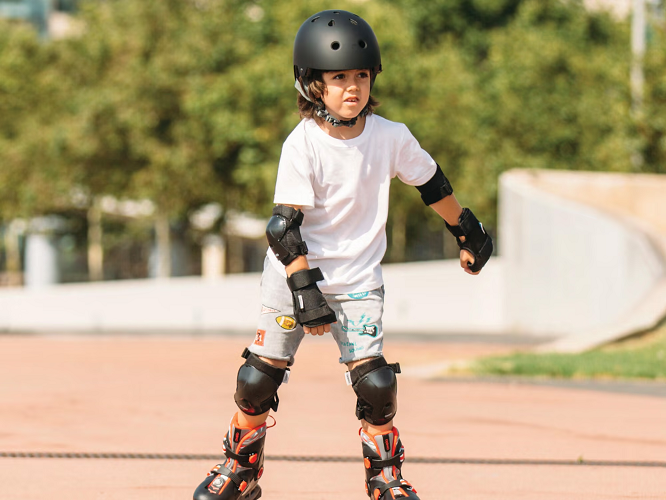
Roller skates can make you fall off your feet if you lose your balance, but if you learn the basic movements of standing, walking, sliding, and stopping, even children can glide easily and happily. When skating, be careful about safety and be sure to wear protective gear. Adults need to support children to prevent them from getting into danger during practice.

